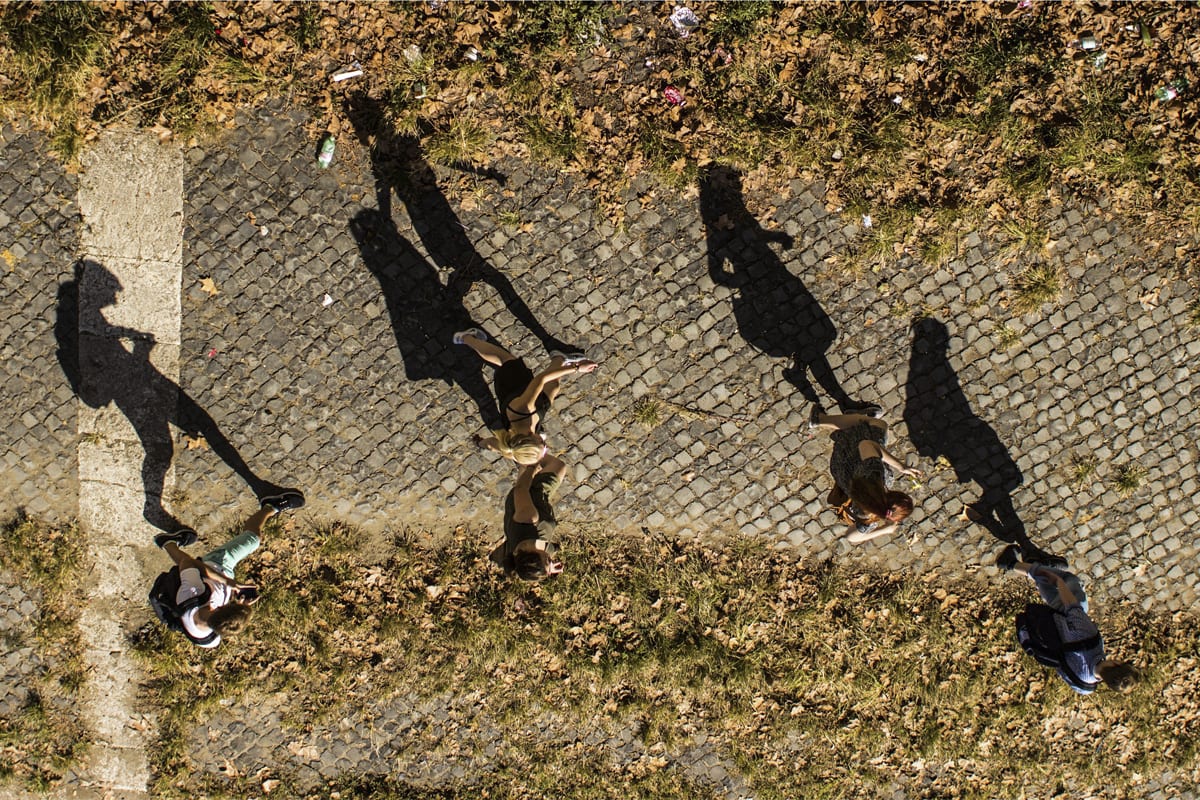WALKING YOUR WAY TO A MINDFUL STATE
Written by Chesa Peter, School Health Facilitator, Ever Active Schools.
Originally published in Healthy Schools Alberta Magazine Special Edition: Active Transportation
IN RECENT YEARS, THE NUMBER OF STUDIES ON MINDFULNESS WITHIN THE CONTEXT OF EDUCATION HAS INCREASED DRAMATICALLY.
Many studies have demonstrated strong correlations between mindfulness practice and cognitive outcomes such as improved attention and focus(1); social and emotional skills such as ability to regulate emotions(2), and improved behaviour in school(3); and measures of well-being such as managing test anxiety(4) and lower levels of stress(5).
These studies include a range of mindfulness practices and are not specific to mindful walking, yet in the spirit of celebrating and encouraging active transportation, below is a mindful walking activity you can try. This activity can be done on your own, with your children or with your students!
MINDFUL WALKING ACTIVITY
How many times have you arrived somewhere without even realizing exactly how you got there? When we make a familiar journey, we often get lost in our thoughts. Sometimes thinking about things that have already occurred – an argument with your family member over breakfast, or if you remembered to feed the dog this morning. Other times, we think ahead – about upcoming homework or deadlines.
Often, when we think of practicing mindfulness, we think of someone sitting cross-legged, eyes closed, quiet and still. It’s true, this is one way to be mindful, but there are many other ways! Mindful walking is an active practice that asks you to increase your awareness and move intentionally, paying close attention to the act of walking and the environment around you. It allows you to connect with your body and with nature! It’s simple and can provide a whole new outlook on your commute. Try this with your children or students while walking together.
- Start by becoming present. Take 3 deep breathes. Ask yourself “how do I feel today?” Take a moment to observe how you feel without judgment. Next, notice how you are standing and make any small adjustments needed to feel balanced.
- Now, begin walking at a slightly slower pace than you would normally take. With every step, pay attention to the way each foot comes in contact with the ground; heel, toe, heel, toe. After a few minutes, slowly allow your observation to expand, beginning to experience how your whole body feels as it moves.
- If your mind wanders off into a thought, gently draw it back. Notice again the feeling and sound of your feet hitting the ground. While maintaining this mindful walking pace, begin to tune into your senses. What do you see around you? Listen for sounds such as the leaves crunching under your feet, or cars passing by or a bird singing in the treetops. Breathe in deeply through your nose, what do you smell?
- Continue to notice your body and notice your surroundings until you reach your destination. Once you arrive, take a moment to reflect. How do you feel now? Did the walk feel different than it normally does? Did you notice something new about your environment? Was it difficult to stay present and not drift away with your thoughts? If the activity was challenging, don’t be discouraged, that’s normal! With a little bit of practice, you will notice that walking mindfully will begin to feel more natural.
- Try it again tomorrow!
DON’T FORGET TO PRACTICE SOCIAL/PHYSICAL DISTANCING!
While walking outdoors is one of the few things we can do right now to get out of the house during this time of social distancing and self-isolating, remember to keep 2 metres of space between you and anyone you don’t live with. If you’re walking on a paved path, hop off to the side of the path when passing others. If you’re walking on a sidewalk, use driveways when possible to give others space. Be mindful of touching things like crosswalk buttons with your bare hands – if you don’t have gloves, bring hand sanitizer or use your elbows!
REFERENCES
- Baijal, S., Jha, A. P., Kiyonaga, A., Singh, R., & Srinivasan, N. (2011). The influence of concentrative meditation training on the development of attention networks during early adolescence. Frontiers in Psychology, 2, 1-9. Napoli, M., Krech, P. R., & Holley, L. C. (2005). Mindfulness Training for Elementary School Students. Journal of Applied School Psychology, 21(1), 99–125. Semple, R. J., Lee, J., Rosa, D., & Miller, L. F. (2010). A randomized trial of mindfulness-based cognitive therapy for children: promoting mindful attention to enhance social-emotional resiliency in children.Journal of Child and Family Studies, 19(2), 218–229.
- Metz, S. M., Frank, J. L., Reibel, D., Cantrell, T., Sanders, R., & Broderick, P. C. (2013). The effectiveness of the learning to BREATHE program on adolescent emotion regulation. Research in Human Development, 10(3), 252–272. Schonert-Reichl, K. A., Oberle, E., Lawlor, M. S., Abbott, D., Thomson, K., Oberlander, T. F., & Diamond, A. (2015). Enhancing cognitive and social–emotional development through a simpleto-administer mindfulness-based school program for elementary school children: A randomized controlled trial. Developmental Psychology, 51(1), 52-66.
- Barnes, V. A., Bauza, L. B., & Treiber, F. A. (2003). Impact of stress reduction on negative school behavior in adolescents. Health and Quality of Life Outcomes, 1(10), 1–7
- Napoli, M., Krech, P. R., & Holley, L. C. (2005). Mindfulness Training for Elementary School Students. Journal of Applied School Psychology, 21(1), 99–125.
- Barnes, V. A., Davis, H. C., Murzynowski, J. B., & Treiber, F. A. (2004). Impact of meditation on resting and ambulatory blood pressure and heart rate in youth. Psychosomatic Medicine, 66(6), 909-914.



